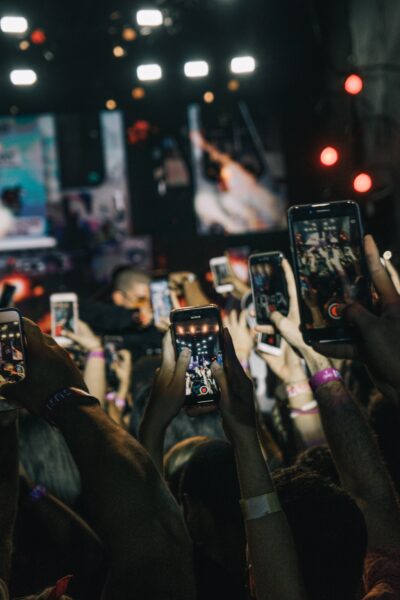Going viral
You’ve seen the videos. Unsuspecting members of the general public attempting to do mundane tasks like their grocery shopping, eating in food courts or simply walking in the streets, are suddenly approached by a ‘good Samaritan’ looking to lift their spirits with a random act of kindness.
But how altruistic is this moment, if that stranger then uploads that content to their YouTube or social media for thousands or sometimes millions of people to comment on and pick apart? How random are these random acts of kindness when engineered for likes, views, and ultimately money? And what are the ethics around filming people without their knowledge or consent in public places?
As this type of content gains popularity among TikTok and Youtube creators due to its mass appeal, shareability and accessibility, discussions around the legalities of sharing filmed content without consent from the participants have started to show up in mainstream media.
These conversations intensified in July, when a Melbourne woman who was unwittingly filmed without her knowledge in a video that has since been viewed more than 57 million times, told the ABC that she found the experience “dehumanising” and “patronising”. The woman in question was having a coffee in a Melbourne shopping center when she was approached by TikTok star Harrison Pawluk, who asked her to hold a bouquet of flowers before walking away. In the same article, the woman stated that she felt that Pawluk used her as “clickbait” and that his actions were “artificial”, not an act of kindness, as claimed by his team.
Since Apple and the like placed smartphones, with the capacity to record, upload and publish, into the hands of the majority of our global population (83.32% of the world’s population in 2022) – documenting our lives has become a force of habit. But along with that comes the very real possibility of inadvertently going viral. The term viral, in the context of the internet, “comes from viral marketing, which started in pre-social-media times with advertising agencies that promoted whisper campaigns or tried to manufacture word of mouth.” In the early days of social media, these viral moments spread organically as people found something funny, relatable, or insightful. However, it seems that creators like Pawluk are taking the viral meaning back to the more engineered concept of their marketing counterparts – manufacturing viral moments for serious coin (according to Forbes, TikTok’s highest paid celebrities brought in $55.5 million in 2021).
Despite the professed good intentions by content creators like Pawluk, as previously explored in an article about online shaming, even content that doesn’t outwardly seek to shame participants, can still open them up to ridicule and abuse.
In an article in Mashable, Dr Siân Brooke, Fellow in Computational Social Science, The London School of Economics and Political Science, states that the impersonal nature of interacting with people and content online can lead to anti-social behaviour.
“The fact that communication platforms such as Twitter seem so removed from every day, face-to-face interaction means that polarisation can result in extreme hostile behaviour and personal attacks,” Brooke said.
“Communication scholars propose that people are more likely to see themselves as part of a crowd online, more easily slipping into a ‘mob mentality’ that can lead to anti-social and aggressive behaviour.”

Sohan Judge, Senior Publishing Strategist at Buzzfeed Australia says that content has evolved in a number of ways since the rise of video content on social media.
“The fast pace of social media has affected the attention span of users, which in turn affects a content piece’s duration and structure. Likes and engagement also affect the way people make content – to succeed you need the numbers to back it up, which means you need to find a way to get people to engage,” says Judge.
“The fact that it’s a two-way conversation means that content can be directly responsive to its audience, which may change how a creator goes about it.”
The rise of influencers and content creators has become so saturated online, that well respected drama institutions like the National Institute of Dramatic Art (NIDA) in New South Wales have begun offering Viral Presenting courses aimed at children from the age of 8 – 15, with the goal of helping them to perfect an online persona for their own YouTube/Tik Tok channel.
As for content, Sohan says that she doesn’t see the trend of ‘good Samaritan’ viral content slowing anytime soon.
“Wholesome content that tugs at the heartstrings has been a popular topic on the internet for years – whether it’s cute animal videos, kids reacting to things, or giving to people in need. One reason is because it appeals to so many audience groups at once – it’s a family friendly piece of content with emotion at its core,” says Judge.
“Another signal is that build-up to a moment of surprise. People have always been drawn to “reality” TV and what’s more real than seeing someone react to a grand, generous gesture? Once again, it makes you feel something, whilst also being widely shareable. The fact that this is a tried and tested formula means that it’s evolved to be performative and, in some cases, completely staged.”
Currently there is no law against filming someone without their consent while in a public space, and little legal recourse for people wanting their image taken down online, unless the video is defamatory or considered commercial. At present the best bet for people finding themselves at the center of a viral video is to contact the producer and ask for it to be taken down or report it to the social media platform. But with big dollars involved that may prove difficult.




